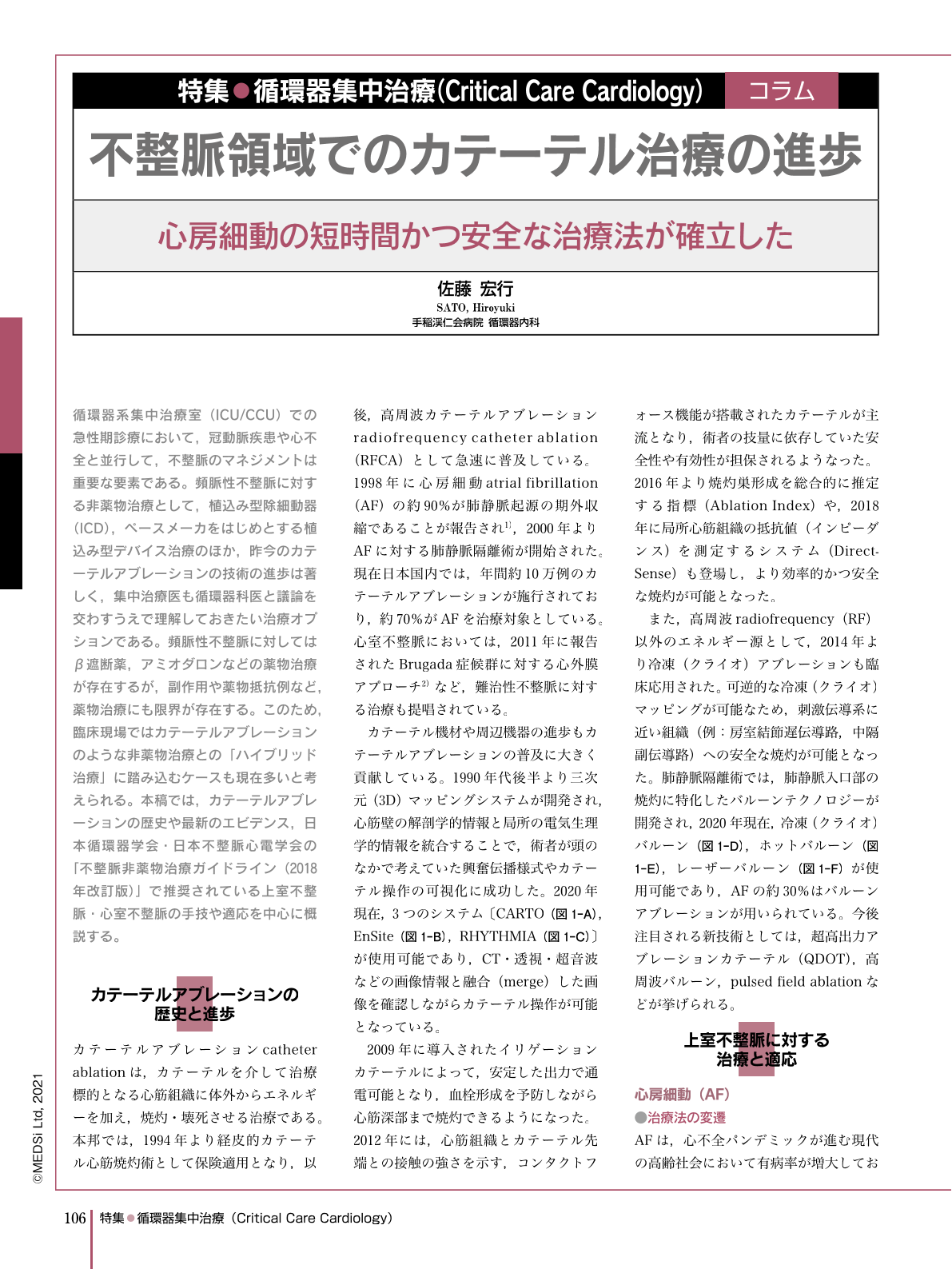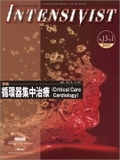Japanese
English
- 有料閲覧
- Abstract 文献概要
- 1ページ目 Look Inside
- 参考文献 Reference
循環器系集中治療室(ICU/CCU)での急性期診療において,冠動脈疾患や心不全と並行して,不整脈のマネジメントは重要な要素である。頻脈性不整脈に対する非薬物治療として,植込み型除細動器(ICD),ペースメーカをはじめとする植込み型デバイス治療のほか,昨今のカテーテルアブレーションの技術の進歩は著しく,集中治療医も循環器科医と議論を交わすうえで理解しておきたい治療オプションである。頻脈性不整脈に対してはβ遮断薬,アミオダロンなどの薬物治療が存在するが,副作用や薬物抵抗例など,薬物治療にも限界が存在する。このため,臨床現場ではカテーテルアブレーションのような非薬物治療との「ハイブリッド治療」に踏み込むケースも現在多いと考えられる。本稿では,カテーテルアブレーションの歴史や最新のエビデンス,日本循環器学会・日本不整脈心電学会の「不整脈非薬物治療ガイドライン(2018年改訂版)」で推奨されている上室不整脈・心室不整脈の手技や適応を中心に概説する。
Management of arrhythmias,as well as coronary disease and heart failure is essential in the ICU/CCU. As non-pharmacological therapy for tachyarrhythmias, catheter ablation has rapidly developed. Catheter ablation is a treatment strategy that intensivists and cardiologists should share in their discussions. Ablation technologies, such as 3D mapping systems, irrigated catheters with contact force, balloon ablation, and new energy sources, have emerged in the last several years. Advances in catheter ablation technology have established standardization of pulmonary vein isolation for atrial fibrillation (AF) to maintain freedom from AF recurrence and safety. The CASTLE-AF study reported that catheter ablation for AF improves the long-term prognosis in patients with heart failure. Atrial tachycardias with complex circuits after heart surgery or previous ablation become visible and treatable using a new 3D mapping system. Epicardial ablation makes it possible to suppress refractory ventricular arrhythmias such as Brugada syndrome. In patients with myocardial infarction presenting with ventricular fibrillation storm, emergent ablation targeting the site of the triggered activity is lifesaving. Intensivists increasingly need to understand the indications and procedures for catheter ablation. This column outlines the history, evidence and recommendations for catheter ablation.

Copyright © 2021, MEDICAL SCIENCES INTERNATIONAL, LTD. All rights reserved.


